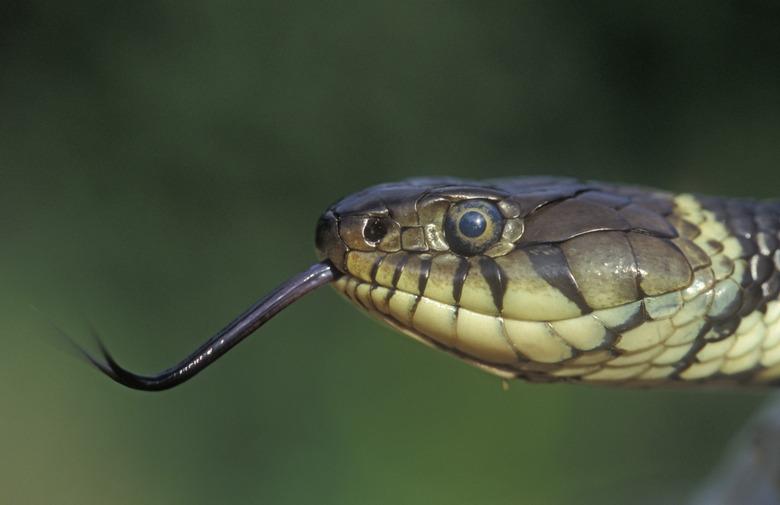Can Snakes Get In Your Toilet From The Drain?
We may receive a commission on purchases made from links.
If you're the squeamish type, you may not want to know this, but yes, snakes can come up your toilet. When you're using the toilet, the only thing between you and the sewer is about 10 inches of water, and many types of snakes can slither through that. It may help to know it happens rarely, and most snakes that can navigate water pipes are small and nonvenomous.
Snakes Entering From Vent Stacks
Snakes Entering From Vent Stacks
If you think the sewer system connected to your toilet is a closed system, one glance at your roof is all you need to convince yourself otherwise. There is a direct path from the opening of the plumbing vent stack on your roof to the main sewer, and the vent often curves before it connects to the soil stack. It's possible for a snake to climb into the vent, fall to a place where the vent curves and crawl from there into a waste line on the upper floor. Creepy and unlikely as this scenario is, it's possible.
Snakes Entering From Sewer Pipes
Snakes Entering From Sewer Pipes
If you do have the misfortune of one day opening the toilet lid to find a snake staring at you, it's more likely that it came from the sewer pipes. A loose cover on your septic tank or a break in the sewer line can provide the necessary access, and while it's unlikely for a snake to crawl through vertical pipes to an upper bathroom, the critter could emerge from a toilet on the ground floor. Far from being fantasy, this has occurred on more than one occasion. It isn't just snakes that come through the sewers but also frogs, rats, and even lizards.
Types of Snakes in Toilets
Types of Snakes in Toilets
The sight of a snake in the toilet is bound to unnerve you, and you may be tempted to simply run out of the bathroom. If you do that without closing the toilet lid, however, you're inviting the intruder to climb out of the toilet and hide. Although the chances of it being poisonous are slim to nonexistent, take a good look at the creature or have an expert examine it.
Benign water snakes and garden-variety species, such as garter snakes—which are the varieties you're most likely to encounter—usually have long, angular bodies and small heads. Poisonous varieties, on the other hand, usually have thick bodies, triangular heads, and small necks. While it's best to keep your distance, if you get a good look at the eyes, round pupils typically indicate a non-venomous snake while thin, vertical pupils on a yellowish-green eye usually mean the snake is poisonous.
How to Snake-Proof Your Toilet
How to Snake-Proof Your Toilet
If you've already had the experience of seeing a snake in your toilet and once was enough, or if you want to avoid the experience altogether, you may need to put a vent cap or screen over the vent opening in the roof. If you do this, clean the screen periodically or your plumbing system may begin to exhibit the symptoms of poor venting, including sewer smells and slow draining. If you have a septic tank, be sure the lid fits tightly and doesn't have any cracks or other damage that leaves an entry point for snakes. It also doesn't hurt to take a careful look in the toilet before you use it.
